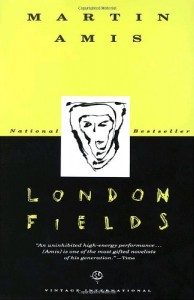Book Simple: The Stories of House Exchanges
.
a life-in-review-through-books by Amy Brown
 When I was just about to go into the tenth grade, my mother; our mother-daughter friends, Betty and Katie; and I went to Paris on a house swap. After our transatlantic flight, the beginning of our trip appears blurred with jet lag in my memory. Photos from the night we arrived involve people sleeping and drinking wine in different configurations: Mom asleep on a chair, Mom and Betty vin rouge in hand, Katie and I lolling on a sofa.
When I was just about to go into the tenth grade, my mother; our mother-daughter friends, Betty and Katie; and I went to Paris on a house swap. After our transatlantic flight, the beginning of our trip appears blurred with jet lag in my memory. Photos from the night we arrived involve people sleeping and drinking wine in different configurations: Mom asleep on a chair, Mom and Betty vin rouge in hand, Katie and I lolling on a sofa.
We were outside the inner ring of the city, in a Parisian suburb named after the Battle of Malakoff during the Crimean War. In exchange for Betty and Katie’s home with its garden sloping down to the Atlantic Ocean, we took command of a tall townhouse; rooms stacked one atop the other, it overlooked a square city yard, the first I’d ever seen. The house was full of what appeared to my adolescent eyes as cultural oddities, like the sticky deep fat fryer in the kitchen and the duvets on the beds instead sheet and blanket.
The entrée into other people’s lives is what makes house-swapping so much fun, almost more than the chance to visit another city, (although, of course, Paris was miraculous). We tooled around the Parisian Périphérique in a tiny green automobile; we ate so many baguettes the grocer met us by name and invited us to visit his family in Tunisia.
 I was reminded of this trip reading the first few pages of Martin Amis’s London Fields; Sam, our narrator, who arrives from New York to a swapped London apartment, describes his luck: “As for the apartment – well, it takes my breath away. …Yes, I have well and truly stiffed Mark Asprey. I tramp through the rooms and think with shame of my contorted little crib in Hell’s Kitchen. He’s a fellow writer, after all, and I would have felt happier, if not with exact equivalence, then with broad parity.”
I was reminded of this trip reading the first few pages of Martin Amis’s London Fields; Sam, our narrator, who arrives from New York to a swapped London apartment, describes his luck: “As for the apartment – well, it takes my breath away. …Yes, I have well and truly stiffed Mark Asprey. I tramp through the rooms and think with shame of my contorted little crib in Hell’s Kitchen. He’s a fellow writer, after all, and I would have felt happier, if not with exact equivalence, then with broad parity.”
Sam reports that he has, in this borrowed apartment, discovered a story: “Three days in and I am ready – I am ready to write … Let me say with due modesty and caution that I have the makings of a really snappy little thriller. Original, too, in its way. Not a whodunit. More a whydoit.” Nicola Six is going to be murdered, Sam tells us. “I am,” supposes Sam, “an accessory before the fact, but to hell with all that for now. I woke up today and thought: If London is a spider’s web, then where do I fit in? Maybe I’m the fly.”
London Fields is a story about story telling; knowing she’ll be murdered on exactly November 9, 1999, Nicola spins a different tale of herself for each of three men, Keith, Guy and our narrator Sam. Like any author, Nicola “always knew what was going to happen next.” She is a femme fatale (though she dislikes the term) in more ways than one, leaving a trail of dramatic heartbreak in her wake. For Keith, her murderer, Nicola is the unexpected: the woman who scams him rather than the other way around. For Guy, she is the hope of freedom from his gilded cage of a life. For Sam, “Nicola Six was the miracle, the absolute donnée. “ She is the genesis of the story that allows him to write again after twenty years of writer’s block.
Travelling always prompts us to tell stories, to construct them from what we see that is new, to receive them from the new people we meet. As Sam says “You can’t stop people, once they start creating,” and the construction of London Fields is both unstoppable and wonderful.






